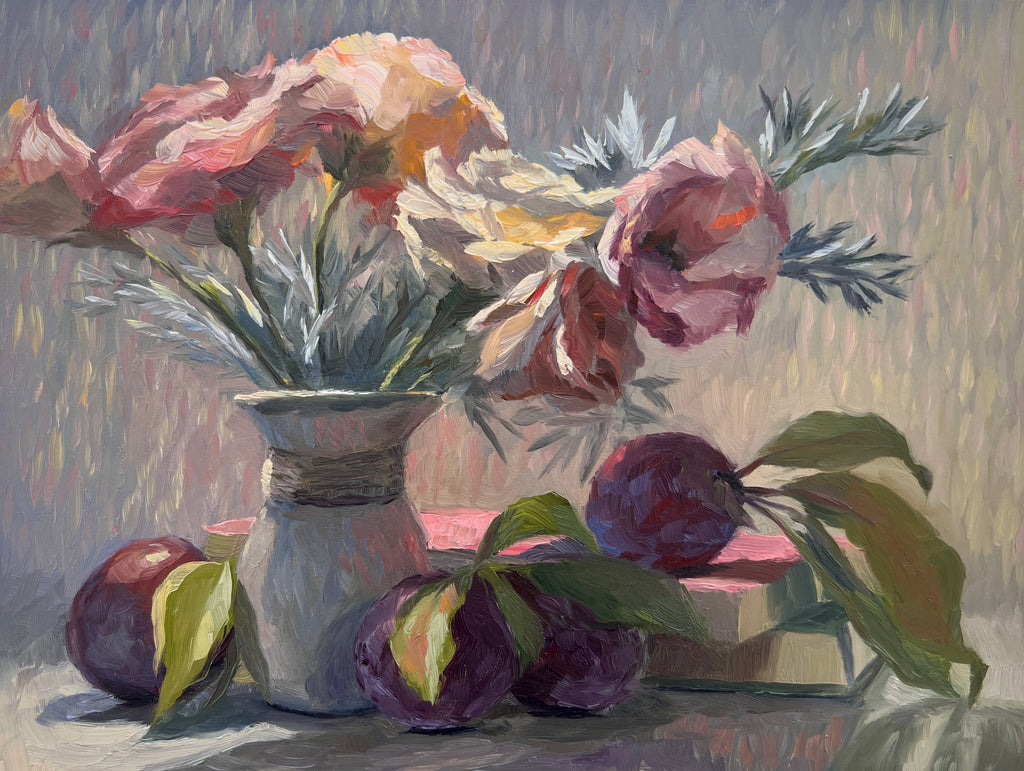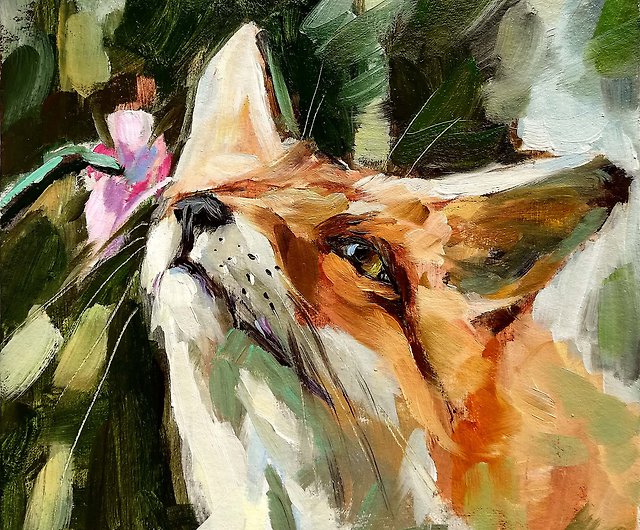Hand-Painted Masterpieces: Oil Paintings for Sale by Artists
Discovering All Regarding Oil Paintings: A Guide to Comprehending Their Charm and Value
Oil paints have actually astounded audiences for centuries, offering a look into the imaginative proficiency of various periods. Their abundant background is intertwined with cutting-edge techniques and extensive emotional expression. Understanding the products and techniques behind these artworks can boost appreciation. Additionally, the marketplace for oil paintings presents possibilities for investors and collectors alike. As one explores this remarkable globe, the inquiry occurs: what makes an oil painting genuinely important?
The Background of Oil Paint: A Trip Via Time
Oil painting has origins that date back to old times, it really flourished during the Renaissance, when musicians discovered its flexibility and abundant shade capacity. Early instances can be mapped to the 7th century, with strategies evolving especially throughout societies. The tool became popular in Northern Europe in the 15th century, especially with the jobs of artists like Jan van Eyck, that pioneered its use for in-depth realism and vibrant hues. This duration noted a departure from tempera paints, permitting higher deepness and appearance. As oil painting spread, it affected many artists, bring about masterpieces by distinguished figures such as Leonardo da Vinci and Rembrandt. The tool's heritage proceeds, shaping the art globe well into contemporary times.
Recognizing Oil Paints: Materials and Techniques
As musicians check out the globe of oil paints, they run into a diverse variety of materials and techniques that define this tool. The main elements of oil paint include pigments, which offer color, and drying out oils, such as linseed, that bind the pigments and facilitate application. Various additives can modify the paint's texture and drying time, enhancing flexibility. Techniques like glazing, where clear layers are developed, and impasto, which includes applying thick paint, enable various visual impacts. Furthermore, making use of brushes, combination knives, and even fingers can produce one-of-a-kind appearances and finishes. Understanding these products and strategies allows artists to totally reveal their imagination and attain the wanted effect in their art work.
The Function of Shade in Oil Paints
Shade plays a crucial role in oil paintings, affecting both aesthetic charm and emotional resonance. Understanding shade theory fundamentals, consisting of the connections in between shades, can enhance an artist's capacity to communicate mood and environment. In addition, grasping shade mixing techniques enables greater deepness and splendor in a painting's combination.

Color Concept Fundamentals
Comprehending color concept is important for musicians working with oil paints, as it creates the foundation for creating visually engaging and harmonious structures. Color concept encompasses the research of just how shades connect, the shade wheel, and the partnerships between primary, additional, and tertiary colors. Artists make use of corresponding colors to boost contrasts and develop centerpieces, while similar shades promote unity and cohesiveness within a piece. Additionally, the concepts of warm and trendy colors affect the understanding of deepness and space in a paint. Understanding these principles enables musicians to manipulate shade efficiently, directing the visitor's eye and interacting their intended message. Mastery of shade concept inevitably improves an artist's ability to share emotions and ideas with their work.
Emotional Impact of Shade
The psychological influence of color in oil paintings plays a crucial function in just how audiences view and connect with art work. Colors evoke details sensations and state of minds, influencing the visitor's mood. For example, warm hues like reds and oranges can develop a feeling of warmth and power, while awesome tones such as blues and eco-friendlies frequently evoke peace or self-contemplation. Artists strategically choose shade combinations to improve narrative components, directing the target market's psychological trip. The saturation and comparison of shades even more magnify these effects, attracting focus and creating focus. Eventually, the interaction of colors in oil paintings not only improves their aesthetic charm but additionally works as an effective medium for emotional expression, enhancing the customer's experience and interpretation.
Color Mixing Techniques
While numerous aspects of oil painting add to the overall composition, understanding color mixing methods is important for achieving wanted results and depth. Shade mixing can be approached via different techniques, including the subtractive and additive processes. Additive blending involves incorporating colors of light, while subtractive blending counts on pigments, where colors mix to create new tones. Musicians typically utilize a limited combination to develop unified jobs, comprehending the partnerships between main, second, and tertiary shades. Methods such as glazing and scumbling additionally improve depth and luminosity. By skillfully mixing colors, a musician can stimulate emotions, develop centerpieces, and attain a feeling of realistic look, ultimately boosting the painting's visual and psychological effect.
Famous Oil Painters and Their Iconic Functions

Renowned for their proficiency of color and strategy, oil painters have produced several of the most renowned artworks in background. Popular artists like Vincent van Gogh mesmerized target markets with his stirring brushwork in "Starry Evening," while Claude Monet's "Impact, Sunrise" laid the groundwork for Impressionism. Leonardo da Vinci's "Mona Lisa" stays an enduring sign of imaginative brilliant, showcasing his ability in recording human expression. Rembrandt's "The Night Watch" highlights his innovative usage of light and darkness. Various other remarkable numbers include Pablo Picasso, who transformed contemporary art with his bold experimentation in works like "Les Demoiselles d'Avignon," and Georgia O'Keeffe, whose vibrant depictions of flowers and landscapes assisted specify American innovation. Each artist's special design added greatly to the oil painting landscape.
How to Evaluate the Quality of an Oil Painting
Examining the high quality of an oil painting includes a careful analysis of workmanship strategies, along with an analysis of shade and make-up. Observing brushwork, layering, and the application of paint can reveal the musician's skill degree. Additionally, the interaction of shades and the total setup of components add significantly to the painting's visual value.
Analyzing Craftsmanship Strategies
A careful assessment of workmanship techniques is crucial for identifying the quality of an oil painting. Evaluators ought to initially analyze the application of paint; thick, textured brushstrokes may suggest a proficient hand, while excessively consistent applications can show a lack of deepness. oil paintings for sale. The layering method is likewise important; the visibility of lusters and differed thickness can enhance luminosity and complexity. In addition, the quality of the materials made use of, such as the canvas and pigments, plays a substantial Recommended Site role in durability and total visual. Focus to detail in elements like sides and shifts in between shades reflects the artist's dedication to their craft. Inevitably, these strategies add to the painting's psychological impact and market price, working as indicators of the artist's skill and intent
Analyzing Color and Composition
While examining the high quality of an oil painting, one must concentrate on the interaction of shade and structure, as these components are fundamental to the artwork's overall impact. Color choices can develop and evoke feelings state of mind; as a result, the artist's scheme ought to be checked out for consistency and comparison. A healthy composition routes the audience's eye and develops a feeling of unity. Musicians usually employ strategies like the rule of thirds or leading lines to improve visual passion. In addition, the usage of light and shadow can add deepness, enhancing the three-dimensionality of the painting. Ultimately, an effective oil painting weds shade and composition, involving the viewer and inviting a deeper recognition of the artist's vision and technique.
Caring for and Preserving Oil Paintings
Correct treatment and preservation of oil paintings is crucial for preserving their honesty and durability. To shield these art work, it is vital to display them far from straight sunshine, which can create fading and discoloration. Maintaining a secure atmosphere with regulated temperature level and humidity more help her latest blog in protecting against damages. Cleaning ought to be done carefully making use of a soft, dry fabric, staying clear of any type of severe chemicals that might damage the paint or varnish. Routine examinations for signs of degeneration, such as flaking or breaking, are recommended. When carrying or storing oil paints, appropriate extra padding and framing are necessary to prevent physical damage. Inevitably, persistent treatment adds to the visual allure and value of oil paintings in time.
The Marketplace for Oil Paints: Investing and accumulating
Understanding the marketplace characteristics for oil paints is essential for investors and collection agencies alike. The worth of these artworks is influenced by different elements, including the musician's reputation, historic significance, and present fads. Collectors typically look for items that reverberate personally while thinking about prospective gratitude in worth. Galleries and auctions work as key places for buying and selling, with costs rising and fall based upon need and rarity. Investing in oil paints calls for research right into the marketplace, in addition to an understanding of authenticity and provenance. Furthermore, emerging musicians may offer possibilities for substantial returns, while developed names can regulate high rates. On the whole, a critical technique to gathering can produce both aesthetic enjoyment and financial benefits.

Frequently Asked Inquiries
What Are the Ecological Influences of Oil Painting Products?
The environmental influences of oil paint materials include the launch of unstable natural substances (VOCs), dangerous waste generation, and source removal for pigments. These aspects contribute to air pollution and environmental destruction, raising problems amongst environmentally conscious artists and customers.
How Do Different Canvases Affect Oil Paint Results?
Various canvases affect oil painting results substantially. Absorbency, surface, and structure high quality can change paint application, drying times, and shade vibrancy. Musicians often select details canvases to attain wanted impacts and enhance their artistic expression.
Can Oil Paintings Be Recovered if Damaged?
Oil paintings can undoubtedly be brought back if damaged. Expert conservators make use of numerous methods to repair splits, tidy surfaces, and address discoloration, making sure that the art work retains its original charm and worth for future generations.
What Are the Signs of an Initial Oil Paint?
The indications of an initial oil painting include noticeable brush strokes, texture variants, and an unequal canvas weave (oil paintings for sale). Furthermore, authenticity may be confirmed via provenance, trademarks, and the presence of a varnish layer unique to oil mediums
Exactly How Has Modern Technology Influenced Modern Oil Painting Techniques?
Technology has actually significantly influenced modern-day their website oil painting methods by introducing electronic tools for planning, enhanced products for texture and long life, and on the internet platforms for offering and sharing art, consequently increasing musicians' creative possibilities and audience get to. Oil painting has roots that date back to old times, it genuinely grew throughout the Renaissance, when musicians discovered its flexibility and abundant shade capacity. The emotional influence of color in oil paintings plays a vital role in how audiences connect and view with art work. While numerous facets of oil painting contribute to the overall structure, grasping shade blending strategies is important for attaining wanted impacts and depth. Assessing the high quality of an oil painting includes a mindful analysis of workmanship techniques, as well as an analysis of color and structure. While examining the high quality of an oil paint, one must concentrate on the interplay of shade and structure, as these elements are essential to the artwork's total impact.